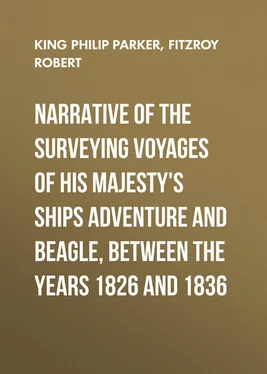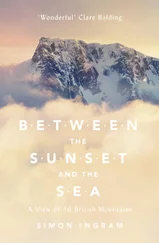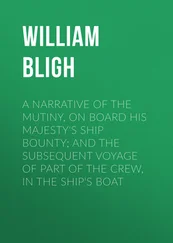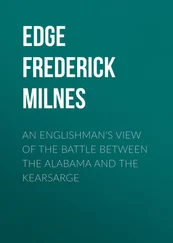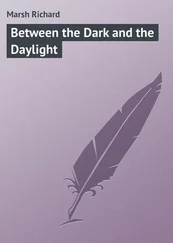Robert Fitzroy - Narrative of the surveying voyages of His Majesty's ships Adventure and Beagle, between the years 1826 and 1836
Здесь есть возможность читать онлайн «Robert Fitzroy - Narrative of the surveying voyages of His Majesty's ships Adventure and Beagle, between the years 1826 and 1836» — ознакомительный отрывок электронной книги совершенно бесплатно, а после прочтения отрывка купить полную версию. В некоторых случаях можно слушать аудио, скачать через торрент в формате fb2 и присутствует краткое содержание. Издательство: Иностранный паблик, Жанр: foreign_antique, foreign_prose, на английском языке. Описание произведения, (предисловие) а так же отзывы посетителей доступны на портале библиотеки ЛибКат.
- Название:Narrative of the surveying voyages of His Majesty's ships Adventure and Beagle, between the years 1826 and 1836
- Автор:
- Издательство:Иностранный паблик
- Жанр:
- Год:неизвестен
- ISBN:нет данных
- Рейтинг книги:3 / 5. Голосов: 1
-
Избранное:Добавить в избранное
- Отзывы:
-
Ваша оценка:
- 60
- 1
- 2
- 3
- 4
- 5
Narrative of the surveying voyages of His Majesty's ships Adventure and Beagle, between the years 1826 and 1836: краткое содержание, описание и аннотация
Предлагаем к чтению аннотацию, описание, краткое содержание или предисловие (зависит от того, что написал сам автор книги «Narrative of the surveying voyages of His Majesty's ships Adventure and Beagle, between the years 1826 and 1836»). Если вы не нашли необходимую информацию о книге — напишите в комментариях, мы постараемся отыскать её.
Narrative of the surveying voyages of His Majesty's ships Adventure and Beagle, between the years 1826 and 1836 — читать онлайн ознакомительный отрывок
Ниже представлен текст книги, разбитый по страницам. Система сохранения места последней прочитанной страницы, позволяет с удобством читать онлайн бесплатно книгу «Narrative of the surveying voyages of His Majesty's ships Adventure and Beagle, between the years 1826 and 1836», без необходимости каждый раз заново искать на чём Вы остановились. Поставьте закладку, и сможете в любой момент перейти на страницу, на которой закончили чтение.
Интервал:
Закладка:
From the fires of the natives in this part having been noticed at a distance from the beach, it would seem that they derive their subsistence from hunting rather than fishing; and as there are guanacoes on the south shore of the First Narrow, it is probable the people's habits resemble those of the Patagonians, rather than the Fuegians; but as they have no horses, the chase of so shy and swift an animal as the guanaco must be fatiguing and very precarious. 98 98 Falkner describes the Indians who inhabit the eastern islands of Tierra del Fuego, to be 'Yacana-cunnees,' and as he designates those who inhabit the Patagonian shore of the Strait by the same name, it might be inferred that they are of the same race; but however closely connected they may have been formerly, they certainly are not so now, for Maria (the Patagonian) spoke very contemptuously of them, and disclaimed their alliance; calling them 'zapallios,' which means slaves.
Sarmiento is the only person on record who has communicated with the natives in the neighbourhood of Cape Monmouth. He calls them in his narrative a large race (Gente grande). There it was that he was attacked by the Indians, whom he repulsed, and one of whom he made prisoner.
We remained a night in Port Famine, and again set out in the Adelaide to survey some of the western parts of the Strait. Bad weather forced us into Port San Antonio; of which Cordova gives so favourable an account, that we were surprised to find it small and inconvenient, even for the Adelaide.
He describes the port to be a mile and a half long, and three quarters of a mile broad: we found the length a mile and a quarter, and the mean breadth scarcely a quarter of a mile. It possesses no one advantage that is not common to almost every other harbour and cove in the Strait; and for a ship, or square-rigged vessel of any kind, it is both difficult to enter, and dangerous to leave. Besides the local disadvantages of Port San Antonio, the weather in it is seldom fair, even when the day is fine elsewhere. It lies at the base of the Lomas Range, which rises almost perpendicularly to the height of three thousand feet, fronting the great western channel of the Strait, whence it receives upon its cold surface the western winds, and is covered by the vapour, which is condensed from them, while in all other parts the sun may be shining brightly.
This port is formed by a channel, a quarter of a mile wide, separating two islands from the shore. The best anchorage is off a picturesque little bay on the south island, which is thickly wooded to the water's edge with the holly leaved berberis, 99 99 Berberis ilicifolia. – Banks and Solander MSS.
fuchsia, and veronica, growing to the height of twenty feet; over-topped and sheltered by large beech, and Winter's-bark trees, rooted under a thick mossy carpet, through which a narrow Indian path winds between arbutus and currant bushes, and round prostrate stems of dead trees, leading to the seaward side of the island. Upon the beach, just within the bushes, and sheltered by a large and wide-spreading fuchsia bush, in full flower, stood two Indian wigwams, which, apparently, had not been inhabited since the visit of poor Ainsworth. He had occupied these very wigwams for two days, having covered them over with the boat's sail; and remains of the ropeyarns that tied it down were still there: a melancholy memento.
In no part of the Strait did we find the vegetation so luxuriant as in this little cove. Some of the Winter's-bark and currant trees had shoots more than five feet long, and many of the Winter's-bark trees were two feet in diameter. The veronica (I believe V. decussata ) grows in the sheltered parts to the height of twenty feet, with a stem six inches in diameter. It was found too on the windward side of the island in abundance, and of large size, rooted in the very wash of the sea-beach, and exposed to the full force of the cold winds and hail-storms, which rush down the wide western reach of the Strait.
The fuchsia also grows to a large size; but it is a more delicate plant than the veronica, and thrives only in sheltered places. Many were observed six inches in diameter; the stems of the two last plants were used by us, during our stay, for fuel.
The day after our arrival, the gale subsided, and the weather became very fine indeed. The stillness of the air may be imagined, when the chirping of humming-birds, and buzzing of large bees, were heard at a considerable distance. A humming-bird had been seen at Port Gallant last year, and was brought to me by Captain Stokes, since which none had been noticed. Here, however, we saw, and procured several; but of only one species. 100 100 The specimen that was found at Port Gallant was sent by me to Mr. Vigors, who considering it, although well known to ornithologists, as never having yet been named, describes it in the Zoological Journal (vol. iii. p. 432, Aug. 1827), as Mellisuga Kingii. Shortly afterwards M. Lesson published it in his Manuel d'Ornithologie (vol. ii. p. 80.), as Ornismya sephaniodes , as a discovery belonging to La Coquille's voyage, in the illustrations of which it is figured at plate 31. I rather think, however, that it is Molina's Trochilus galeritus . – (Molina, i. 275.).
It is the same as that found on the western coast, as high as Lima; so that it has a range of 41° of latitude, the southern limit being 53½°, if not farther south.
The islets, at the north part of the port, were well stocked with geese and other birds, which supplied our people with fresh meals. The steamer duck we found difficult to shoot, from its excessive wariness, and power of remaining, for a great length of time, under water.
Our fine weather lasted but a few hours, and (no unusual occurrence in these regions) was succeeded by a week's rain and wind, during which we were confined to the small space of the Adelaide; and for some days had three anchors down, owing to the violent squalls. Farenheit's thermometer ranged between thirty-six and forty-six degrees, and we had several snow storms, but the snow did not lie on the low grounds.
On the 28th the gale began to subside, and there was a change for the better; but we were again disappointed, and not until the 31st could we effect our departure from this dreary and confined little place.
The day before we sailed, three canoes, containing in all sixteen persons, of whom six only were men, came alongside.
For about an hour they had hesitated to approach; but when once near us, very little invitation was necessary to induce them to come on board. One was clothed in a duck shirt, which was recognised by one of our people, who had joined us from the Uxbridge, as having been given to them a few weeks before, when that vessel passed through Magdalen Channel: another wore a red flannel shirt, and in the canoe we observed an European boarding-pike, painted green, and a part of the iron-work of the cutter, burned at Port Famine during our absence; also some relics of the boat in which Mr. Ainsworth was drowned, which last they had doubtless found thrown up on the beach. Upon our inquiring how they became possessed of the iron-work, they pointed towards Fort Famine; and I have no doubt they were concerned in the fire; but as we could not explain to them the mischief they had occasioned, it was thought better not to notice the affair, and the articles were returned to them. They could have had no idea of our being the owners of the boat, or they would have concealed all that belonged to her.
They conducted themselves very quietly during their stay on board, with the exception of one, who tried to pick my pocket of a handkerchief; the offender was ordered out of the vessel, and there was no further attempt to pilfer. They wished to go below; but this was not permitted, because the odour of their oily persons was scarcely tolerable, even in the open air. As to food, tallow-candles, biscuit, beef, plumb-pudding, were equally liked, and swallowed most voraciously. One of them was discovered taking the tallow out of the end of the deep sea lead and eating it, although mixed with sand and dirt.
Читать дальшеИнтервал:
Закладка:
Похожие книги на «Narrative of the surveying voyages of His Majesty's ships Adventure and Beagle, between the years 1826 and 1836»
Представляем Вашему вниманию похожие книги на «Narrative of the surveying voyages of His Majesty's ships Adventure and Beagle, between the years 1826 and 1836» списком для выбора. Мы отобрали схожую по названию и смыслу литературу в надежде предоставить читателям больше вариантов отыскать новые, интересные, ещё непрочитанные произведения.
Обсуждение, отзывы о книге «Narrative of the surveying voyages of His Majesty's ships Adventure and Beagle, between the years 1826 and 1836» и просто собственные мнения читателей. Оставьте ваши комментарии, напишите, что Вы думаете о произведении, его смысле или главных героях. Укажите что конкретно понравилось, а что нет, и почему Вы так считаете.
